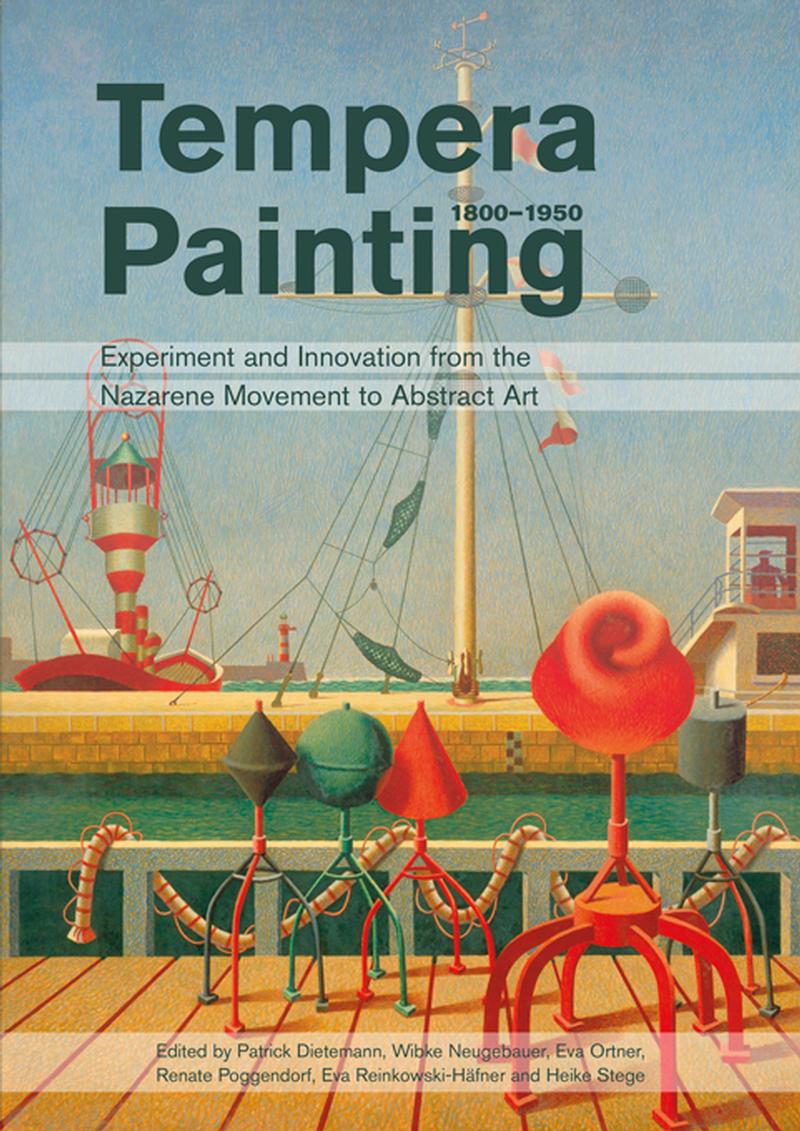The papers and posters in this volume were presented at the international conference Tempera Painting between 1800 and 1950: Experiments and Innovations from the Nazarene Movement to Abstract Art held at the Doerner Institut, in cooperation with the Academy of Fine Arts, Munich, the Technical University Munich (Chair of Conservation-Restoration, Art Technology and Conservation Science) and museum partners Villa Stuck and the Lenbachhaus.
These texts explore the revival of tempera painting between 1800 and 1950 from the perspectives of art history, technical art history, conservation and scientific analysis. General papers provide an overview on topics such as the historical background of tempera painting, its terminologies,commercial production and the reconstruction of historical recipes, fundamentals of rheology, binding medium analyses and their interpretation. Particular papers focus on the work of Christina Herringham, Frances Hodgkins, Paul Klee, Hermann Prell, John Roddam Spencer Stanhope, Joseph Southall, Edward Steichen and Ossawa Tanner. The book offers new insights into what artists were trying to achieve, the materials they used and how they prepared and applied them.
For a look inside click here.
Please note that the pdf of this title is available to download free of charge on the Doerner Institut website .
You may also be interested in Another Archetype title on Tempera......Painting in Tempera, c.1900
Foreword
Introduction
PAPERS
The paragone between oil and tempera painting in the 19th and 20th centuries
Matthias Krüger
The tempera revival 1800–1950: historical background, methods of investigation and the question of relevance
Karoline Beltinger
Tempera: narratives on a technical term in art and conservation
Eva Reinkowski-Häfner
Colour and form in highest perfection: teaching tempera in the early 20th century
Kathrin Kinseher
Past, recent, and future developments in the analysis and interpretation of tempera-based systems
Kristin deGhetaldi
Flow behaviour and microstructure of complex, multiphase fluids
Annika Hodapp, Patrick Dietemann and Norbert Willenbacher
Analysis and interpretation of binding media from tempera paintings
Patrick Dietemann, Wibke Neugebauer, Cedric Beil, Irene Fiedler and Ursula Baumer
Towards historical accuracy in the production of historic recipe reconstructions
Leslie Carlyle
The exception to the rule: reconstructing Richard Wurm’s Temperafarbe
Wibke Neugebauer, Ursula Baumer and Patrick Dietemann
Tempera painting in Veneto at the beginning of the 20th century
Teresa Perusini, Giuseppina Perusini, Francesca C. Izzo and Giovanni Soccol
‘I explored every means of painting back then, notably every tempera’: Hermann Prell’s research on tempera
Silke Beisiegel
‘If there is no struggle there is no victory’: Christiana Herringham and the British tempera revival
Michaela Jones
Joseph Southall and the tempera revival
George Breeze
The spiritual from the material: exploring the tempera recipes of African-American artist Henry Ossawa Tanner in his later visionary paintings
Brian Baade, Amber Kerr, Kristin deGhetaldi and Chris Petersen
‘Then egg, then watercolour or tempera paints, then alcohol resin’: Paul Klee’s tempera painting techniques
Patrizia Zeppetella, Stefan Zumbühl and Nathalie Bäschlin
Tempera and pastels: the colour effects created in Paul Klee’s later work
Nathalie Bäschlin and Stefan Zumbühl
Edward Steichen’s last temperas
Abbie Sprague
POSTERS
Studies on the consolidation treatment of a collection of 19th-century tüchlein from the Palau Ducal of Gandia, Valencia, Spain
Esther Aznar Franco, Susana Martín Rey and María Castell Agustí
Tempera techniques used by Czech landscape painters at the end of the 19th century
Hana Bilavcíková, Václava Antušková, Radka Šefcu, Václav Pitthard and Lenka Zamrazilová
Hiding in plain sight? Tempera-based British paintings at Tate, London
Joyce H. Townsend
Love and the Maiden by John Roddam Spencer Stanhope: assumptions and the importance of analysis
Elise Effmann Clifford
Frances Hodgkins: tempera painting and experimentation in St Ives, Cornwall
Sarah Hillary and Martin Middleditch
Everything old is new again: investigating a modern tempera fake of a medieval panel painting
Glennis Elizabeth Rayermann, Anna Stein and Gregory Dale Smith
Formation of efflorescence and soaps in a group of 31-year-old tempera paints: a baseline for comparison
Stephanie Barnes and Jia-sun Tsang
WORKSHOP SUMMARIES
Tempera: painting with egg and oil (part 1). Recipes, handling properties and painterly qualities (part 2)
Lisa Afken and Reni Mothes
Making paints with egg, oil and pigments: possibilities, physicochemical properties and distribution of the phases
Patrick Dietemann, Ursula Baumer, Wibke Neugebaur and Ulricke Fischer
Tempera versus oil paint
Ulrich Zwerenz and Johanna Thierse
Combining fresco and tempera
Stefanie Correll, Stefan George, Klaus Häfner, Jessica Kallage-Götze and Eva Reinkowski- Häfner
Syntonos paint: an early commercial tempera paint. Its properties and applications
Catharina Blänsdorf
Case studies of tempera painting in Munich c.1900
Luise Sand
Exploring the working methods of Henry Ossawa Tanner and other selected early 20th-century emulsion recipes
Brian Baade
Ernst Berger #temperaemulsions: tempera networks in Munich c.1900
Kathrin Kinseher
Max Doerner’s tempera painting techniques
Elisabeth Fugmann, Iris Masson and Valerie Müller
Kurt Wehlte’s tempera recipes on different ground layers
Ivo Mohrmann and Monika Kammer
